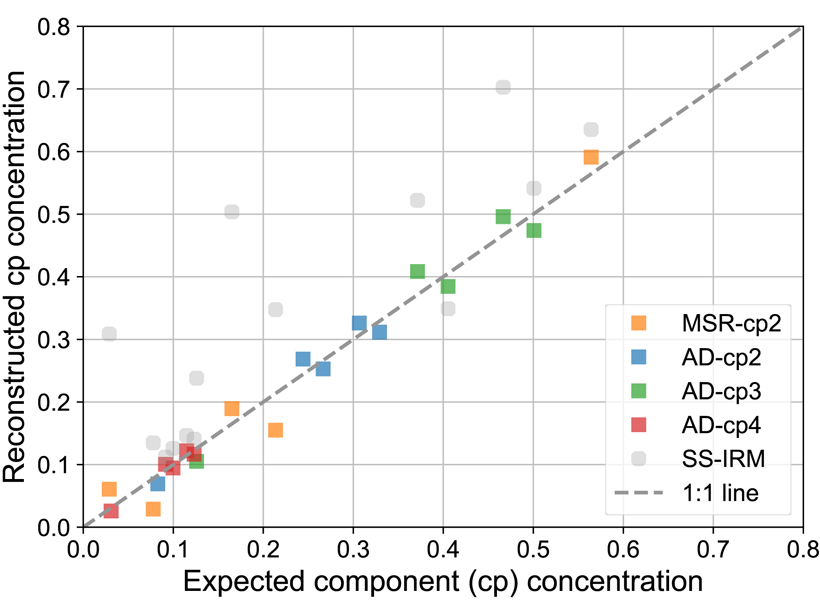Source: Journal of Geophysical Research: Solid Earth
A rock’s magnetic properties can be a sensitive probe of past geological and environmental conditions; they are captured in a (pretty diverse) set of magnetic parameters. However, the interpretation of those parameters is often non-unique and may be biased by the interpreter’s preference. To alleviate these drawbacks several unmixing approaches have been developed during the last 25 years or so, mathematically based on either forward or inverse approaches.
He et al. [2020] put these approaches to the test by investigating how well-known experimental mixtures of two magnetically rather distinct endmembers are unmixed; the endmembers explored are andesite rock and a magnetotactic bacterium strain. They show that inverse approaches perform well under the proviso that the full data variability is captured in the data collection. In the case of known endmembers, a hybrid mixing approach is favored. A collection of most meaningful endmembers would be amenable to machine learning; i.e. the search for such endmembers is on!
Citation: He, K., Zhao, X., Pan, Y., Zhao, X., Qin, H., & Zhang, T. [2020]. Benchmarking component analysis of remanent magnetization curves with a synthetic mixture series: Insight into the reliability of unmixing natural samples. Journal of Geophysical Research: Solid Earth, 125, e2020JB020105. https://doi.org/10.1029/2020JB020105
—Mark J. Dekkers, Associate Editor, JGR: Solid Earth
Text © 2020. The authors. CC BY-NC-ND 3.0
Except where otherwise noted, images are subject to copyright. Any reuse without express permission from the copyright owner is prohibited.

